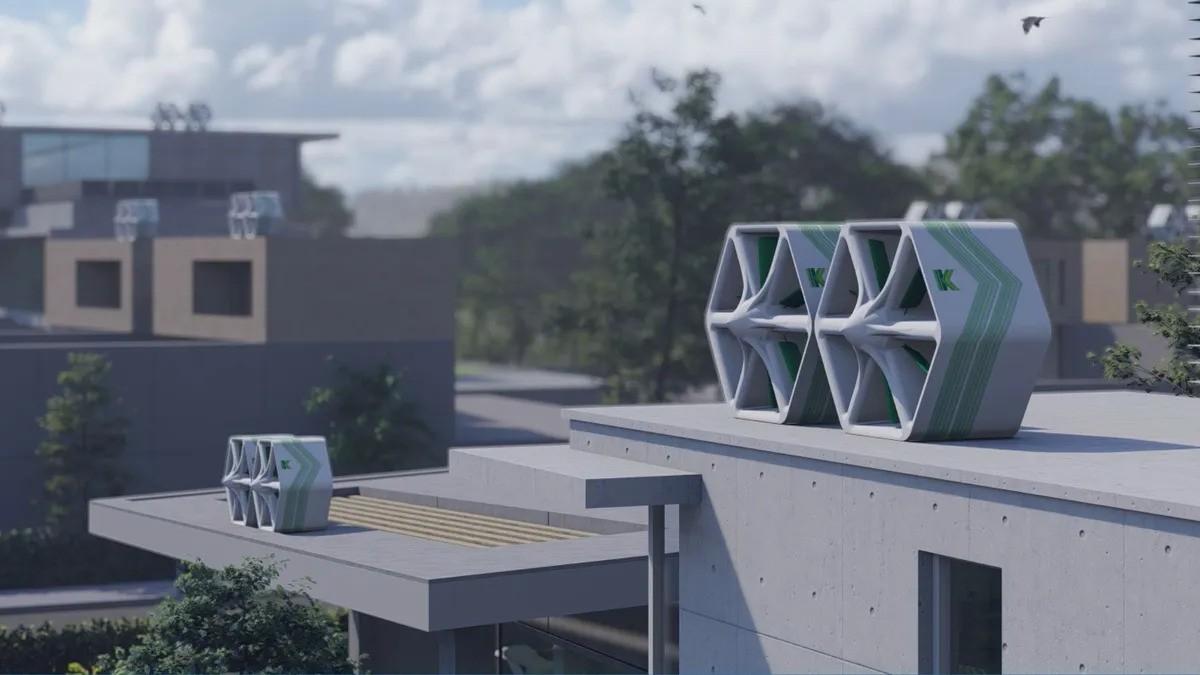Glasgow-based startup Katrick Technologies is revolutionizing the renewable energy sector with its innovative bladeless honeycomb wind turbines. Departing from the familiar sight of towering turbines with spinning blades, Katrick’s design features a compact hexagonal grid resembling a honeycomb. These bladeless turbines can be installed atop urban buildings or integrated into existing structures.
The key technology behind Katrick’s innovation involves aerofoils that oscillate independently when exposed to the kinetic energy of the wind. These mechanical oscillations are then converted into energy, making the approach more efficient, especially in less windy conditions. This design also addresses the challenges faced by traditional turbines, such as the need for considerable land and maintenance, making it a more sustainable and cost-effective alternative, particularly in urban settings where space is limited.
Taking their innovation a step further, Katrick Technologies introduces the Wind Panel, a groundbreaking wind power generation technology that overcomes the limitations of conventional turbines. The Wind Panel captures a wider range of wind speeds and frequencies at lower levels through its unique design, featuring aerofoil ducts developed in collaboration with The Manufacturing Technology Centre (MTC).
The Wind Panel has undergone successful Alpha testing, validated to Technology Readiness Level (TRL) 5 by the University of Strathclyde. During the 51 tests lasting over 80 hours, the prototype exceeded expectations by producing 41.1 W of mechanical power at just 10.2 m/s, surpassing the predicted maximum level. The overall efficiency was higher than anticipated, standing at 6.85%, a significant improvement on forecast results.
Encouraged by the success of Alpha Stage 1, Katrick Technologies is now preparing for the upcoming stages, focusing on commercialization. Stage 2 involves validating the technology to TRL 6 and demonstrating it in a wind tunnel to simulate various environmental conditions. Following validation, Stage 3 will include any required upgrades and optimizations, bringing the technology closer to market readiness.
Steve Nesbitt, Chief Technologist for the Built Environment at MTC, emphasizes the importance of local renewable energy generation, especially as the demand for clean electricity rises. He sees Katrick’s novel technology as a solution to this demand, highlighting the collaboration with MTC to make the innovation a reality and accelerate society’s transition to sustainable energy.
“Demand for clean electricity will rise significantly as we move away from using power produced by burning fossil fuels. But because distribution networks may not be able to fully satisfy this demand, we will need to be able to generate renewable energy locally or on buildings,” said Nesbitt.
“Katrick’s novel technology is a great example of how this can be achieved, and we are pleased to be working with them to make their innovation a reality. We look forward to continuing our work with them to help commercialize their invention and accelerate society’s transition to sustainable energy.”
Cameron Johnstone, Director of the Energy Systems Research Unit at the University of Strathclyde, praises Katrick Technologies for achieving a significant step forward with the Wind Panel, de-risking both the investment for market maturation and the product’s performance and robustness.

